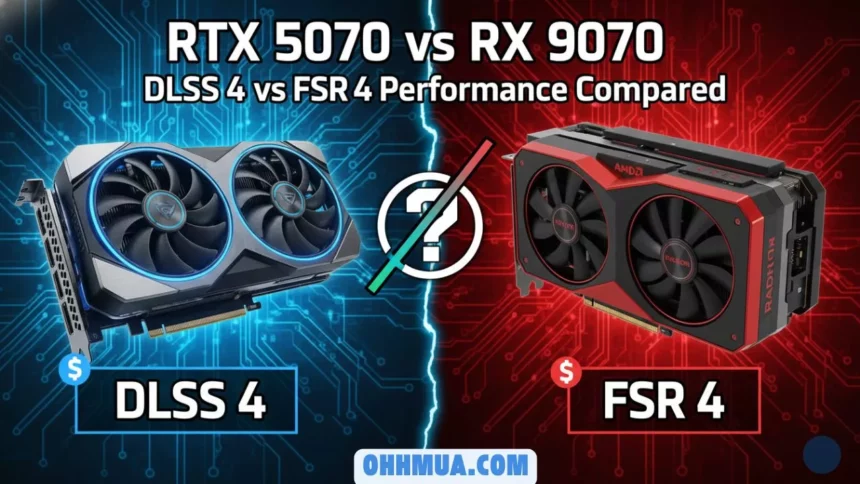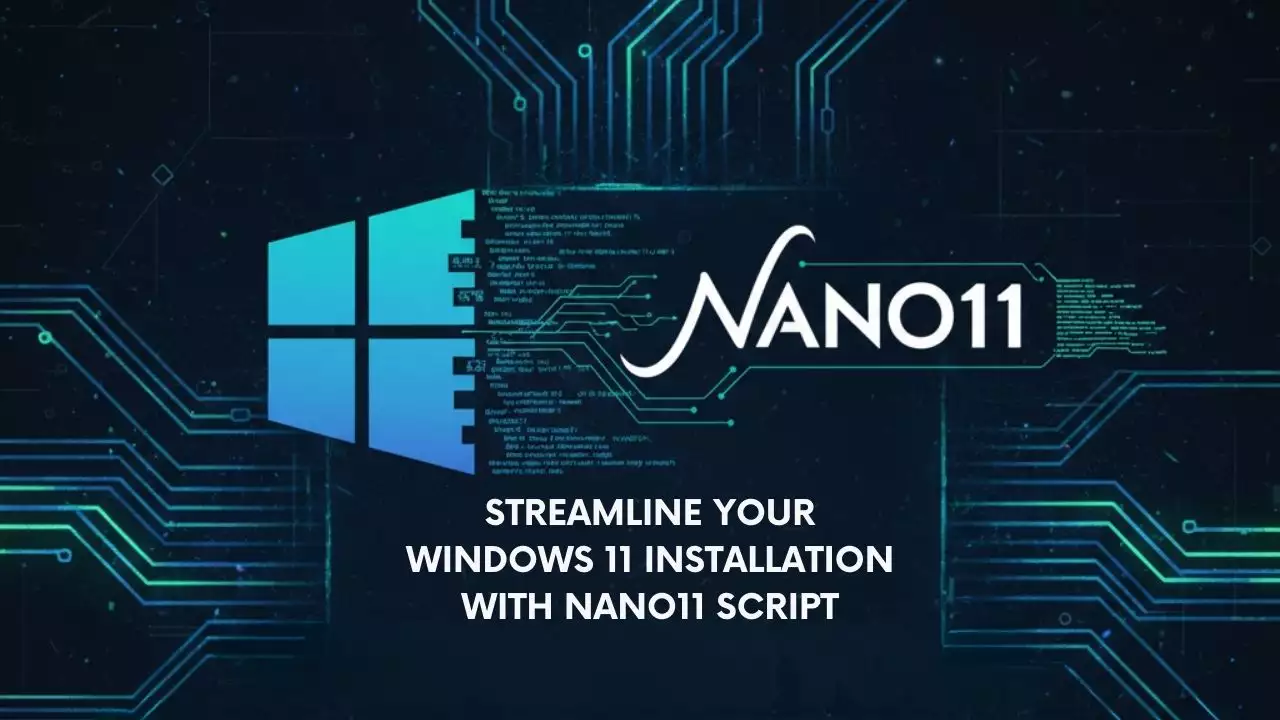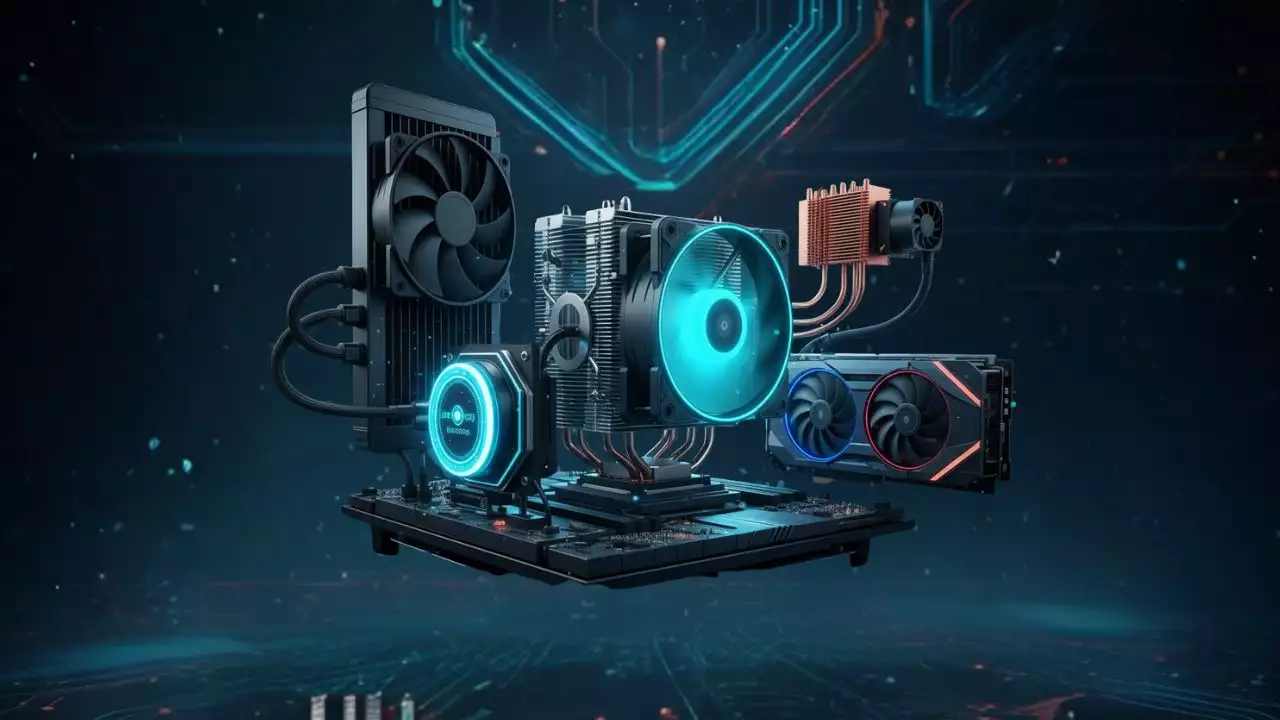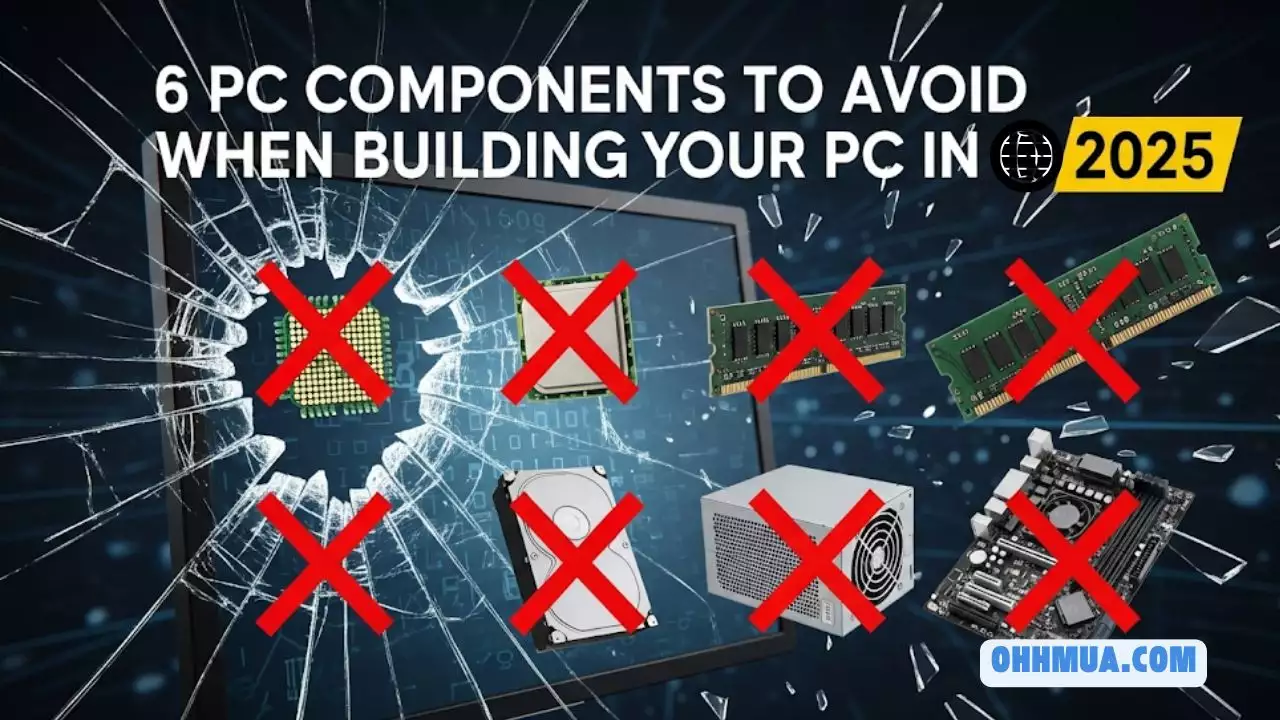The RTX 5070 and RX 9070 both occupy the $550 mid-range GPU market segment, but extensive testing across 23 games reveals the RX 9070 delivers 13% better overall performance while the RTX 5070 counters with superior upscaling technology and ray tracing capabilities. Your choice ultimately depends on whether you prioritize raw frame rates or feature-rich gaming experiences with advanced rendering techniques.
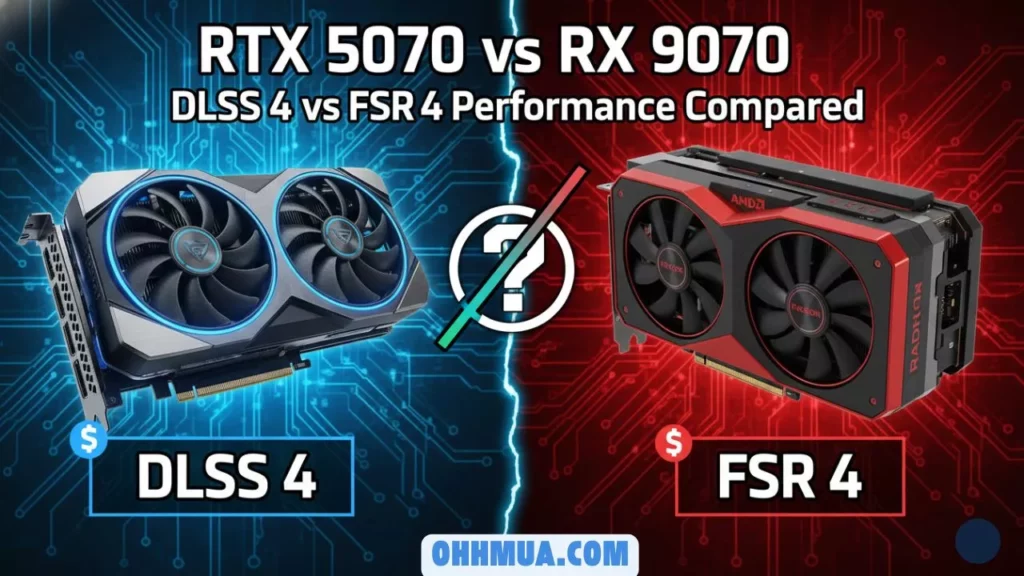
What Is the Testing Methodology Behind This Comparison?
The comprehensive benchmark analysis evaluated both graphics cards under identical conditions to ensure fair assessment. Each GPU was tested at 1440p resolution, which represents the most popular gaming resolution for enthusiasts seeking high-quality visuals without extreme performance demands.
The testing protocol included three distinct scenarios:
-
- Native rendering without upscaling technology
- Three upscaling quality modes: quality, balanced, and performance settings
- A diverse game library spanning 23 different titles across multiple genres
This methodology reveals not just which card performs better overall, but how each card behaves under different workloads and settings. The RX 9070 uses FSR 4 as its upscaling solution, while the RTX 5070 employs DLSS 4. Both technologies aim to boost frame rates through intelligent upscaling, though they achieve this through different approaches.
How Does Raw GPU Performance Compare Between These Cards?
The performance gap between these two mid-range contenders becomes immediately clear when examining frame rate results. The RX 9070 consistently outperforms the RTX 5070 by approximately 13% across all testing scenarios. This margin remains remarkably consistent whether running native rendering or using any of the three upscaling modes.
Perhaps most importantly, this performance advantage isn’t influenced by the upscaling technology being used. The RTX 5070’s DLSS 4 technology doesn’t close the performance gap, nor does the RX 9070’s FSR 4 implementation increase the margin. This suggests both upscalers are performing at their intended capability level, with neither providing an unfair advantage to its respective GPU.
The consistency of this 13% performance lead across different scenarios indicates a fundamental hardware advantage for the RX 9070. Gamers targeting 60 frames per second at 1440p should find the RX 9070 reaching that target in all 23 tested games. The RTX 5070, meanwhile, achieves 60fps in 21 of the 23 games tested, missing that threshold in a couple of demanding titles.
Why Do Game-Specific Results Vary Between the Two Cards?
While the overall performance trend favors the RX 9070, individual game performance tells a more nuanced story. Certain titles demonstrate significantly larger performance gaps, while others show relatively balanced competition between the cards.
The most dramatic differences appear in specific games:
-
- In Mafia, the RX 9070 leads by over 20%
- The Last of Us Part Two shows a 20%+ advantage for the RX 9070
- Borderlands 4 demonstrates superior RX 9070 performance exceeding 20%
- Stella Blade represents one of the few titles where the RTX 5070 performs better
- Ray tracing and path tracing intensive games favor the RTX 5070
These variations reveal that GPU performance isn’t monolithic. Games leverage different rendering techniques, memory access patterns, and computational approaches. The RX 9070’s architecture clearly excels with certain workloads common in open-world titles and modern game engines. The RTX 5070 demonstrates its strength in heavy ray tracing scenarios, where Nvidia’s hardware architecture provides tangible benefits.
Game-specific optimization also plays a role. Developers sometimes prioritize one GPU architecture during optimization, potentially skewing results in their favor. This is normal in the graphics card industry and typically corrects itself over time through driver updates.
What Does It Take for RTX 5070 to Match the RX 9070?
RTX 5070 users shouldn’t despair about the performance gap. Nvidia’s DLSS 4 technology offers flexibility that can help close the performance divide. To match the RX 9070’s performance in quality upscaling mode, RTX 5070 users can simply switch to balanced or performance mode DLSS settings.
This represents a practical solution for gamers who prioritize frame rates over image quality. The trade-off involves reducing visual quality slightly, but modern upscaling technology has become sophisticated enough that most gamers won’t notice significant visual degradation when moving from quality to balanced mode.
However, this workaround doesn’t address the core issue. The RX 9070 achieves better performance while maintaining higher upscaling quality settings. This means RX 9070 users enjoy superior visuals alongside better frame rates. RTX 5070 owners must sacrifice image quality to compete with the RX 9070’s default performance.
For those unwilling to compromise on visual quality, the RTX 5070 still offers compelling advantages elsewhere. Its strength in ray tracing scenarios, broader software ecosystem, and additional features like multi-frame generation and CUDA support provide meaningful benefits for specific use cases.
What Are the Key Advantages of the RX 9070?
The RX 9070 brings several compelling advantages to the table that extend beyond raw performance numbers. The most obvious benefit is superior overall performance consistency. Testing shows it hits 60fps in all 23 games, compared to the RTX 5070’s 21 games at the same threshold. For gamers targeting smooth, stable frame rates, this difference matters.
Memory capacity represents another significant advantage. The RX 9070 features 16GB of VRAM, while the RTX 5070 comes with 12GB. At 1440p, current games typically consume 10-11GB of video memory, putting the RTX 5070 close to its limits. The RX 9070’s extra memory provides meaningful future-proofing as games become increasingly demanding.
Recent driver updates have improved the RX 9070’s performance since its launch. The GPU delivers better value over time as AMD’s drivers mature. Cost-per-frame analysis shows the RX 9070 offers 11% better value than the RTX 5070. For budget-conscious gamers seeking longevity and consistent performance improvements, this advantage compounds over years of ownership.
The substantial VRAM advantage deserves emphasis. Current games already use substantial amounts of video memory. As development standards increase and ray tracing becomes more prevalent, that 16GB capacity will prove invaluable. The RTX 5070’s 12GB might become bottlenecking within 2-3 years as triple-A game development advances.
What Are the Key Advantages of the RTX 5070?
While the RX 9070 dominates raw performance metrics, the RTX 5070 offers advantages in software ecosystem and specialized features. Nvidia’s DLSS 4 technology has broader game support than AMD’s FSR 4. This compatibility advantage extends through fallback support to DLSS 3 and DLSS 2 for older games that don’t yet support the latest version.
Image quality represents another area where the RTX 5070 pulls ahead. Independent analysis consistently shows that DLSS 4 delivers superior visual quality compared to FSR 4. For gamers who spend hours in their favorite game worlds, superior image fidelity contributes to overall enjoyment and immersion. The difference becomes especially noticeable when examining fine details, text rendering, and transparency effects.
Ray tracing and path tracing performance favors the RTX 5070 significantly. These advanced rendering techniques have become increasingly important in modern games. Nvidia’s hardware architecture provides inherent advantages for ray tracing workloads. Gamers prioritizing stunning visual effects with advanced lighting and reflections will appreciate the RTX 5070’s superior capability in these scenarios.
Additional Nvidia features expand the RTX 5070’s appeal. Multi-frame generation technology produces multiple frames from single GPU renders, effectively boosting perceived performance. CUDA support makes the card valuable for creative professionals working with video editing, 3D rendering, and machine learning applications. These professional capabilities extend the card’s utility beyond gaming.
The DLSS 4 ecosystem includes AI tools and advanced features that enhance gaming and creative workflows. Nvidia’s decade-long development of upscaling technology means the company has solved many edge cases and compatibility issues. This software maturity translates to more stable, reliable experiences across a broader range of titles.
What Should You Consider When Choosing Between These GPUs?
Selecting between the RX 9070 and RTX 5070 requires honest self-assessment about your gaming priorities and long-term vision. Neither card emerges as an obvious winner. Instead, each excels in different areas, making your choice dependent on personal preferences.
Choose the RX 9070 if you prioritize the following:
-
- Maximum frame rates and consistent 60fps gaming across all modern titles
- Future-proofing through 16GB VRAM capacity
- Long-term value considering driver improvements and cost-per-frame calculations
- Games like open-world titles where the RX 9070 demonstrates 20%+ advantages
- A slightly less expensive upfront investment with AMD’s typically competitive pricing
Choose the RTX 5070 if your priorities align with these factors:
-
- Broader game compatibility through superior DLSS ecosystem support
- Superior image quality through advanced DLSS 4 technology
- Ray tracing and path tracing intensive games where Nvidia excels
- Professional applications including video editing, 3D rendering, or machine learning
- Access to exclusive Nvidia features like multi-frame generation and AI tools
The RTX 5070’s 12GB VRAM limitation deserves serious consideration for long-term ownership. Games continue becoming more demanding. The buffer between current needs and VRAM capacity shrinks yearly. The RX 9070’s 16GB provides meaningful headroom for 3-4 years of gaming without memory-related performance stutters.
The upcoming RX 9070 XT at $650 price point may influence your decision. This premium variant could provide clarity about performance trajectories and value propositions. Waiting for additional benchmarks comparing the XT variant might yield better purchase decisions for those without immediate upgrade needs.
How Do Upscaling Technologies Compare in Practical Gaming?
Both DLSS 4 and FSR 4 represent the cutting edge of GPU upscaling technology. However, they achieve this through different technical approaches. Understanding these differences helps clarify the practical implications for your gaming experience.
DLSS 4 utilizes Nvidia’s Tensor cores and deep learning algorithms to analyze images and intelligently upscale them. The technology has evolved through multiple generations, with DLSS 4 incorporating frame generation capabilities that produce additional frames between traditionally rendered frames. This technology provides substantial performance boosts alongside visual quality.
FSR 4 represents AMD’s answer to upscaling challenges. While still capable, FSR 4 takes a different algorithmic approach. AMD’s technology traditionally focused on pure upscaling without the frame generation component, though recent versions have incorporated their own frame generation technologies.
Testing reveals that in quality mode, DLSS 4 preserves more fine details and maintains better edge quality. The visual difference becomes apparent when examining textured surfaces, distant objects, and transparent effects. FSR 4 produces acceptable results in quality mode but with slightly softer details in certain scenarios.
Game support varies significantly. DLSS 4 works across hundreds of games, with fallback versions ensuring compatibility with older titles. FSR 4, being newer, has narrower support initially. However, AMD’s open approach to upscaling standards means more developers can technically implement the technology over time.
| Feature | RTX 5070 + DLSS 4 | RX 9070 + FSR 4 |
|---|---|---|
| Raw Performance | Baseline (100%) | +13% Advantage |
| Memory Capacity | 12GB VRAM | 16GB VRAM |
| Ray Tracing Performance | Superior | Standard |
| Upscaling Quality | Superior | Good |
| Game Support | Broader | Growing |
| Professional Tools | CUDA, AI Tools | Limited |
| 60fps Achievement | 21 of 23 games | All 23 games |
| Cost Per Frame | 11% Higher | 11% Lower |
What’s the Final Verdict for Buyers in 2025?
After comprehensive analysis, neither GPU qualifies as a clear universal winner. The RX 9070 improved noticeably since launch through driver optimization, delivering genuinely superior raw performance. The RTX 5070 counters with superior software ecosystem, better image quality through DLSS 4, and exceptional ray tracing capabilities. This creates a genuine dilemma for buyers seeking straightforward recommendations.
The RX 9070 emerges as the better choice for gamers prioritizing frame rates, future-proofing through VRAM capacity, and long-term cost value. The consistent performance advantage across all scenarios, combined with 16GB memory and improved driver support, positions it well for multi-year ownership without upgrade pressure.
The RTX 5070 appeals more to gamers seeking visual quality, professional capabilities, and software ecosystem maturity. The superior DLSS 4 implementation, ray tracing prowess, and CUDA support justify its premium positioning for specific use cases. However, the 12GB VRAM limitation represents a genuine long-term concern requiring serious consideration.
Price dynamics may ultimately determine your choice. The RX 9070 typically costs slightly less than the RTX 5070, making the performance advantage even more compelling from a value perspective. If AMD prices aggressively while Nvidia maintains premium positioning, the RX 9070 becomes increasingly attractive despite the RTX 5070’s advantages.
The RX 9070 XT launch at $650 provides an alternative worth monitoring. This premium variant could reshape the competitive landscape, potentially offering performance that decisively separates it from both the standard models and justifying the price increase for those seeking maximum capability.
Frequently Asked Questions
What does DLSS 4 do differently from FSR 4?
DLSS 4 uses Nvidia’s Tensor cores and AI to upscale images while generating additional frames, delivering superior visual quality and greater performance boosts. FSR 4 takes a different algorithmic approach and has wider game compatibility but produces slightly softer upscaled images compared to DLSS 4.
Can the RTX 5070 match RX 9070 performance?
Yes, by switching DLSS 4 from quality to balanced or performance mode, RTX 5070 users can achieve similar frame rates as the RX 9070. However, this requires sacrificing image quality, whereas the RX 9070 maintains superior visuals at the same performance level.
Is 12GB VRAM enough for gaming in 2025?
Currently yes, but modern games consume 10-11GB at 1440p, leaving minimal headroom. The RTX 5070’s 12GB becomes limiting within 2-3 years as games become more demanding, making the RX 9070’s 16GB significantly better for future-proofing your investment.
Which GPU is better for ray tracing?
The RTX 5070 demonstrates superior performance in ray tracing and path tracing scenarios due to Nvidia’s hardware architecture advantages. If advanced lighting effects and reflections matter to you, the RTX 5070’s ray tracing capability provides meaningful benefits.
Does the RX 9070 have professional capabilities?
The RX 9070 lacks CUDA support and professional tools that make the RTX 5070 valuable for creative professionals. Video editors, 3D artists, and machine learning developers should strongly consider the RTX 5070 despite its gaming performance disadvantage.
Will driver updates improve either GPU’s performance?
Yes, both GPUs typically receive performance improvements through driver updates over time. The RX 9070 has already seen notable gains since launch, while the RTX 5070 benefits from Nvidia’s mature driver ecosystem. AMD historically provides consistent improvements to newer GPU architectures.

Hi, I’m Nghia Vo: a computer hardware graduate, passionate PC hardware blogger, and entrepreneur with extensive hands-on experience building and upgrading computers for gaming, productivity, and business operations.
As the founder of Vonebuy.com, a verified ecommerce store under Vietnam’s Ministry of Industry and Trade, I combine my technical knowledge with real-world business applications to help users make confident decisions.
I specialize in no-nonsense guides on RAM overclocking, motherboard compatibility, SSD upgrades, and honest product reviews sharing everything I’ve tested and implemented for my customers and readers.

